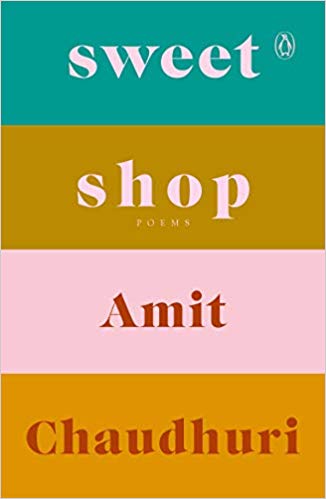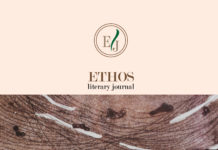Title: Sweet Shop
Writer: Amit Chaudhuri
Format: Hardcover
Book Length: 128
Publisher: Penguin
Publishing Date: February 2019
Language: English
Reviewed by: Pramila Tripathy
Sweets and Calcutta: A Tryst with the Metaphysical
Amit Chaudhuri’s book Sweet Shop came out in 2019. The poems of the book take their themes from various kinds of sweets and present a meditation on people, culture and the world. The poet relates his poems to the sweets in a way that reminds us of how the taste of sweets gradually unfolds in our mouth. Going through the poems helps us discover varied hesitations, assertions and behavioural patterns of people that make them what they are. Reading the poems of Sweet Shop is like having an experience where we can relate mundane activities to a sweet that refers to some higher order of actions. There are insights into spirituality and the human psyche and how individuals are likely to behave in particular kinds of situations.
The first poem of the book goes by the name of “Sweet Shop” and the first line goes like “The whole universe is here.” It feels like that the poet here is trying to convey his experience of tasting the entire universe. Chaudhuri here gives a poetic description of a sweet shop where there are sweets of “Every colour, a few/ on the verge of being barely tolerable / Every shape as well…” He further mentions that the trays on which the sweets are kept “brim (but don’t tremble) with mass and form.” Further into the poem, the poet muses that only instinct can give the sweets their shape and no mould can do it. He then describes the sweet shop as “In the harmony shielded by the glass / is an unnoticed balance of gravity and play.”
Another poem, “Just As” compares “sandesh” to “…jewellery / moist cells shinning / or scented erasers you cradle at five.” Chaudhuri says that just like these things are “too detectable / to be spent on their own purpose / but ask to be eaten,” in the same way sandesh, a kind of sweet urges the buyer of sweets the same. The sandesh is kept behind the pane and almost creates an aura that makes the sweet shop a museum where the delicacy is “to be stared at and historicized.”
The poem “Shyamalda” focuses on how human beings are likely to behave in a particular situation. It portrays the character of Shyamalda, who being severely hungry, decides to eat sweets that are ravaged by insects. This act amuses Chaudhuri, and he asks Shyamalda how he could eat those sweets, which had flies and ants on them, and Shyamalda laughs and replies, “I would flick it off, and eat!” Chaudhuri here observes that hunger is something of a physical emotion that is “evidently more immediate than sorrow.”
Then there is the poem “The Left,” which is a take on the theory of the “other.” The poet here describes the left hand as that silenced “other” “that’s / the shadow figure / outside the doorway— / always hovering, always near, / but instructed without edict / not to present itself.” Chaudhuri then draws a reference between the Brahmin caste and the left hand, and observes how like the Brahmins the left hand, after cleaning the backside, “…crouches like a Brahmin / drowning himself in dirty water / to expunge the sins of another life.” The poet here takes a dig on the system of caste and the belief popularised by Brahmins that bathing in the holy river of Ganges will wash away one’s sins of this life and of the previous lives as well. The poem shows that in spite of being in power, how the Brahmins are actually the “others” who are constantly drowning themselves in order to get rid of sins.
Another poem of the book goes by the name of “Petha” and shows that how taste of sweets can create division in society. The sweet petha is considered to be a dish that lacks pedigree and thus, people loving it end up becoming “a different breed.” The middle class section of the society generally avoids this sweet, and they have no idea that this sweet bursts “in the mouth and dissolve / immediately like a thunderclap.”
The poems of Sweet Shop deal with various kinds of themes and are bound by a single thread of the sweets. It is a wonder how Chaudhuri has presented several pictures of the society through his descriptions of the sweets. The poems are layered and can be interpreted in many ways. Going through Chaudhuri’s work will prove to be an enchanting journey, and if you have a sweet tooth you should give this book a read.




